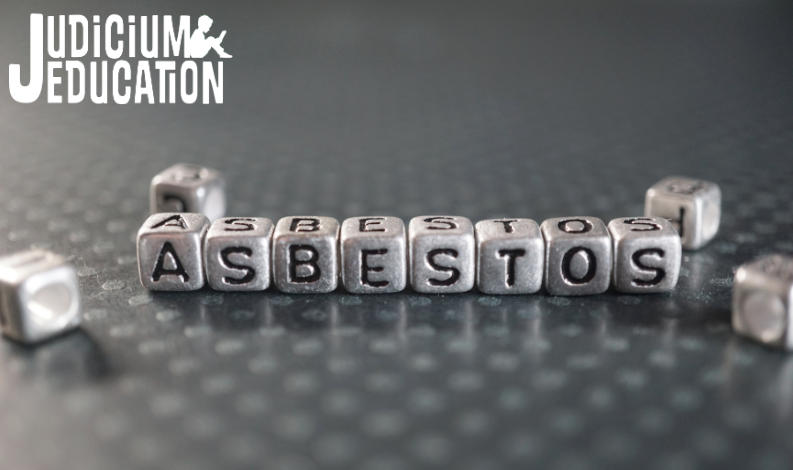_1000.jpg)
Top Tips on Fire Inspections A-Z
subscribing to our newsletter
This summary is based on Judicium’s Sofa Session on Fire Inspections A-Z from the 24th of February 2021, with our expert Darren Knowles AIFireE.
Official government statistics show that over the last 10 years there has been an average of 700 fires each year in education establishments, which account for around 14 fires per week or just less than 60 per month.
What does a Fire Inspector look at?
Fire alarm panel - Is it turned on? Is it functioning correctly or is it showing a fault? If there’s an issue, depending upon the risk, you may be looking at some form of Enforcement action, or even Prohibition.
Fire Risk Assessment – Do you have one that is reviewed annually? Does it provide the level of detail you require to keep your site and all Relevant Persons safe? Does it cover the main 5 main areas of Risk Assessment?- Identify the fire hazards - combustibles near to source of ignition
- Identify people at risk - staff, students, contractors, other users of premises
- Evaluate, remove, reduce, protect from risk - Can you remove or reduce combustibles through better waste management
- Record, plan, inform, instruct and train - Good record keeping is key, along with training of staff
- Review - Review the FRA at least annually or if the risk changes
Who is ultimately responsible?
The Responsible Person or RP is laid out in Article 3 of the FSO. Within Article 3 it details a hierarchy of RP’s which are:
- The employer (i.e., It could be a Board of Governors, an Academy Trust or Local Education Authority)
- The person who has control over the premises (as occupier or otherwise) Headteacher / Principal
- The Owner (who may not have control over the day-to-day undertakings)
The responsibilities of the RP cannot be discharged onto others, such as a member of staff, but they can utilise staff (such as a Premises Team) to help discharge duties under each of the Articles.
Bear in mind that anyone within the organisation can be called to give evidence to prove non-compliance and as such we should keep fire safety at the top of our minds.
Main issues that are found during an inspection
The main issues tend to be linked to the Means of Escape, Fire Doors, Fire Alarm Systems as well as Premises Teams not fully understanding the safety systems built into the premises.
The importance of a Means of Escape or MOE is to assist all relevant persons to be able to turn their back on the fire and escape the premises within a reasonable amount of time. This is where Fire Doors become paramount. All too often we see them propped open by wedges.
NB: While the use of wedges is not new, it has become more of an issue with the current Coronavirus Pandemic. Government guidance and recent announcements have made it clear that the ventilation of a premises should never compromise fire safety.
Other issues with Fire Doors are in the understanding of which doors are Fire Doors and as such which are critical in ensuring the compartmentation of a premises remains intact.
Depending on the age of some school premises, it appears that a lot of the Fire Alarm Systems, we come across are coming towards the end of their life. It is therefore imperative that this area is given considered thought when it comes to budgeting. When looking at new Fire Alarm systems we can help to support with this.
With any new build or major refurbishment project, there is a requirement under Regulation 38 of the Building Regulations 2010 for the Principal Contractor / Designer to provide information on the fire safety systems within the building, whether this be active or passive systems.
- Active - can include such things as the fire alarm system, sprinkler system or smoke control systems such as an Automatic Opening Vent (AOV) within protected stair cores.
- Passive - can include fire doors, compartment walls or fire stopping products, such as sealants used around cable trays, so that it expands. This means that fire or smoke can’t spread to other compartments. More often than not I have seen the misuse of pink expanding foam...
If you require any support in any of these steps, or would like to talk to someone surrounding some support for your school please do not hesitate to call us on 0203 326 9174 or email tara.jones@judicium.com.
Related content
.png)
This blog is based on Judicium’s SEND ‘Sofa Session’ from the 16th of May, with our resident expert Rik Chilvers.

This summary is based on Judicium’s Employment Law ‘Sofa Session’ from the 15th of May, with our resident experts Jenny Salero, Kelly Rayner and Suzanne Ravenhall

This is a summary taken from Judicium’s DPO ‘Sofa Session’ from 8th May, with our Data Protection Consultant Jessica Gant.
.png)
This blog is based on Judicium’s SEND ‘Sofa Session’ from the 1st of May, with our resident expert Rik Chilvers.
.png)
This blog is based on Judicium’s Safeguarding ‘Sofa Session’ from the 25 April with our resident expert Sarah Cook.

This blog is based on Judicium’s Health and Safety ‘Sofa Session’ from the 24th of April, with our resident expert Marta Zydel.


Sofa Sessions | SEND